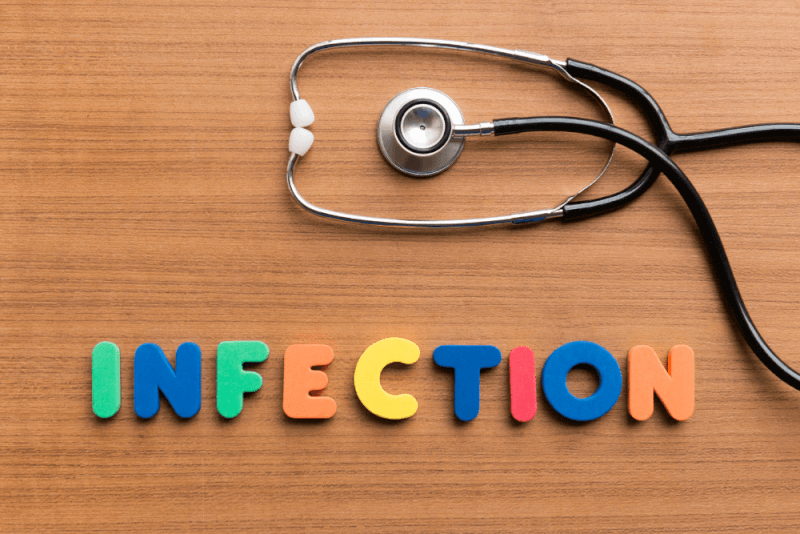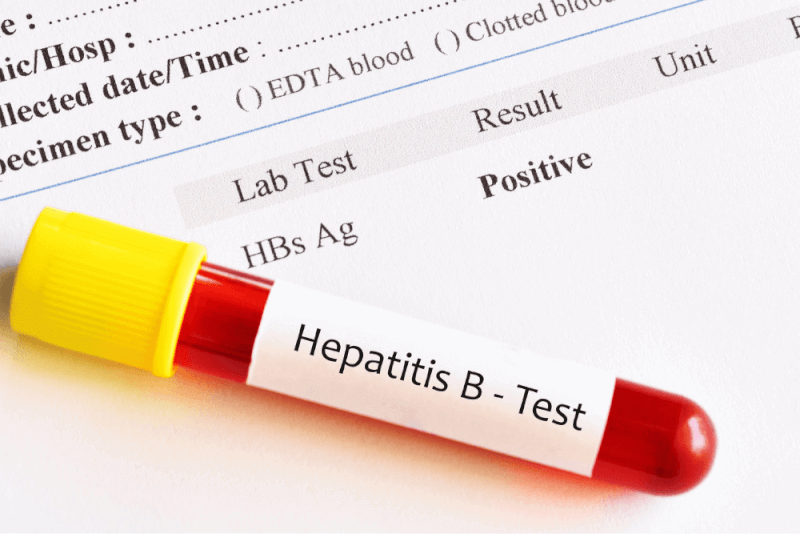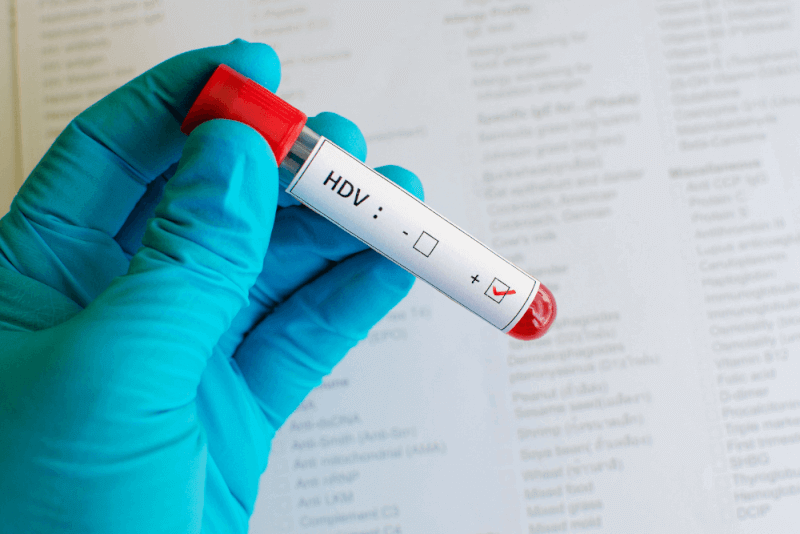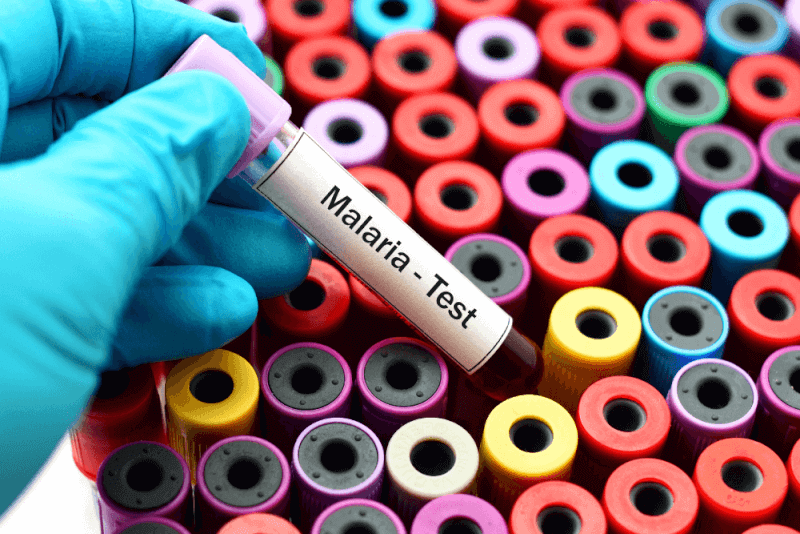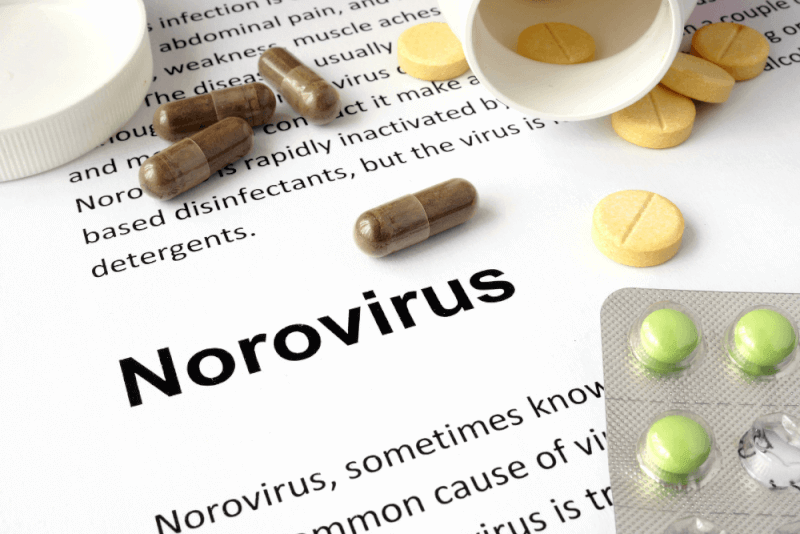30-Second Summary
- Diseases caused by harmful organisms entering the body from outside are called infectious diseases.
- The cause of infection formation is pathogenic sources. Different types of pathogens cause infections in different organs and tissues.
- Infectious diseases are diagnosed using one or more laboratory tests.
- The treatment of infection varies according to the cause. In some cases, monitoring the disease may be sufficient instead of treatment.
What is Infection?
Diseases caused by harmful organisms entering the body from outside are called infectious diseases. They are also referred to as contagious diseases. Pathogens that cause infections include viruses, bacteria, fungi, parasites, and rarely prions. Contagious diseases can be contracted from other people, insect bites, and contaminated food, water, or soil.
Contagious diseases are caused by harmful organisms such as viruses and bacteria entering the body from outside. Non-communicable diseases, on the other hand, are not caused by external organisms but by genetic factors, anatomical differences, aging, and the environment we live in. While flu, measles, and throat infections are examples of contagious or infectious diseases, cancer, diabetes, and Alzheimer's are examples of non-communicable diseases.
Types of Infection
Contagious diseases are known as viral, bacterial, parasitic, or fungal infections. Additionally, there is a rare group of contagious diseases known as transmissible spongiform encephalopathies.
Viral Infections
Viruses are pieces of information within a protective shell. The protective shell of viruses is called a capsid, and the piece of information is called RNA or DNA. Viruses are much smaller than human cells and cannot reproduce on their own. For this reason, they enter cells and use cellular mechanisms to replicate themselves.
Common infections caused by viruses include:
- Cold
- Common cold
- Flu
- COVID-19
- Stomach flu
- Hepatitis
- RSV
Bacterial Infections
Bacteria are single-celled organisms with a piece of DNA. Bacteria are found everywhere, including inside the body and on the skin. Many bacteria are harmless and even beneficial, but some release toxins that can make humans sick.
The main difference between bacteria and viruses is that viruses are organisms that do not consist of cells, so they must infect living organisms to replicate. Additionally, antibiotics can treat most bacterial infections, while only a few drugs are available for treating viral infections.
Bacterial infections are also divided into types. Depending on how bacteria are exposed to and which part of the body they infect, they can cause many types of infections. Common bacterial infections include:
- Food poisoning
- Some skin, ear, or sinus infections
- Some sexually transmitted infections
- Bacterial pneumonia
- Most urinary tract infections
Transmission Routes of Bacterial Infections
Bacterial infections can be transmitted in various ways. Transmission routes of infections include:
- Air or droplets
- By contact
- Through vectors like insects
- Through food or drinks
Fungal Infections
As with bacteria, there are many different types of fungi. Many of these fungi continue to live inside and outside the body. However, if fungi grow excessively or if harmful fungi enter the body through the mouth, nose, or a cut in the skin, disease may occur.
Fungal infections seen on the skin or nails are usually not serious. However, in individuals with a weakened immune system, infections can lead to serious medical conditions.
Types of fungal infections exist and are mainly divided into three sections. These sections include the following:
- Superficial fungal infections cause the infection of nails, skin, and mucous membranes. Examples of superficial fungal infections include ringworm, candidiasis, and onychomycosis.
- Subcutaneous fungal infections occur when fungi enter through a wound in the skin and cause an infection under the skin. They are more common in tropical and subtropical regions, and examples include rose gardener's disease, chromoblastomycosis, and eumycetoma.
- Deep fungal infections are those that occur in internal organs such as the lungs and urinary tract. These are called opportunistic infections because they occur in people with weakened immune systems. Examples of deep fungal infections include histoplasmosis, valley fever, blastomycosis, aspergillosis, invasive candidiasis, pneumocystis pneumonia, mucormycosis, and cryptococcosis.
Parasitic Infections
Parasites use the bodies of other organisms for living and reproduction. Parasites include worms and some single-celled organisms. They obtain the necessary nutrients for survival through their hosts.
Parasitic infections are divided into three main types. These types include the following:
- Protozoan infections are single-celled parasites that cause infections in the blood, intestines, brain, skin, eyes, and other parts of the body.
- Helminths is a term used for parasitic worms. Helminths are further subdivided into flukes, tapeworms, roundworms, and thorny-headed worms. They can infect both in their adult and larval stages. These parasites often infect the intestines but can also affect the skin, brain, and other tissues.
- Ectoparasites are insects and arachnids that enter and live on the skin. This group includes lice, ticks, and fleas. They generally do not infect other parts of the body.
The most common parasitic infections worldwide include the following:
- Malaria
- Toxoplasmosis
- Lice
- Giardiasis
- Pinworms
Transmissible Spongiform Encephalopathies
Also known as TSE or prion diseases, these pathogens are defective proteins that cause other proteins in the body to become faulty. The body cannot use or eliminate these proteins, leading them to accumulate and cause illness. Prions are an extremely rare cause of infectious diseases.
Types of Infections
Pathogens cause different types of infections in various regions of the body. These types of infections can be bacterial, viral, or caused by parasites.
Urinary Tract Infection
Infections affecting the urinary system are called urinary tract infections. This type of infection can occur in the urethra, kidneys, and bladder. Common symptoms of a urinary tract infection include:
- Hematuria
- Dysuria
- Urgency incontinence
- Frequent urination
- Urinary incontinence
- Cloudy and foul-smelling urine
- Pressure in the lower pelvis
The most common cause of urinary tract infections is E. Coli. This bacterium, usually found in the large intestine, can easily infect the urinary tract.
Intestinal Infections
Intestinal infections can be caused by bacteria, viruses, and parasites. These infections are referred to by different names depending on the type of pathogen causing the illness and the tissue it infects. This distinction also leads to differences in symptoms, diagnosis, and treatment.
The most common viral intestinal infection is gastroenteritis, also known as stomach flu. In this infection, viruses attack the intestines, causing symptoms such as:
- Watery, usually non-bloody diarrhea
- Nausea and vomiting
- Stomach pain and cramps
- Muscle pain
- Headache
Viral intestinal infections typically begin to show symptoms 1-3 days after infection. Symptoms usually last 1-2 days, but in some cases, they can persist for up to 14 days. It is very easy to confuse these infections with bacterial intestinal infections, which have similar symptoms.
Common viruses that cause viral intestinal infections include:
- Noroviruses affect both children and adults and are the most common cause of foodborne illness worldwide. They can impact families and communities and are more likely to spread in closed environments. The virus often enters the body through contaminated food or water, but it can also spread through close contact or food sharing. Additionally, touching a contaminated surface and then touching the mouth can also lead to infection.
- Rotavirus primarily affects children and spreads through contaminated food and objects brought to the mouth. This virus can severely affect infants and young children, although adults may show no symptoms.
There is no specific medication for viral intestinal infections. Instead, it is recommended to take small sips of water, avoid certain foods, and rest as much as possible. Anti-nausea medications may also be used to alleviate symptoms.
Common bacterial causes of intestinal infections include:
- Salmonella
- Shigella
- E. Coli
- C. Jejuni
- C. Difficile
- S. Aureus
The most common types of parasites that cause intestinal infections include:
- Giardia
- Cryptosporidium
- Cyclospora
Lung Infection
A lung infection, also known as pneumonia, is an infection caused by bacteria, viruses, or fungi in the lungs. It leads to inflammation of lung tissues and may result in fluid or pus formation in the lungs. Bacterial pneumonia is generally more severe than viral pneumonia. Pneumonia can affect one or both lungs. When both lungs are affected, it is referred to as bilateral pneumonia.
Patients with viral and bacterial pneumonia show different symptoms. Bacterial pneumonia tends to be more common and severe than viral pneumonia, with a higher likelihood of requiring hospitalization. Healthcare providers treat bacterial pneumonia with antibiotics. Viral pneumonia causes flu-like symptoms and is more likely to resolve on its own, often requiring no specific treatment.
Lung infections are classified based on their cause and transmission route, including community-acquired, hospital-acquired, and ventilator-associated pneumonia types.
The most common bacteria causing pneumonia include:
- Streptococcus pneumoniae
- Mycoplasma pneumoniae
- Haemophilus influenza
- Chlamydia pneumoniae
- Legionella
The most common viruses causing pneumonia include:
- Influenza
- COVID-19
- RSV
The most common fungi causing pneumonia include:
- Cryptococcus
- Pneumocystis jirovecii
- Coccidioides
Although protozoa rarely cause pneumonia, common causes include:
- Toxoplasma
Symptoms of pneumonia vary depending on the type of pathogen. Common symptoms of bacterial pneumonia include:
- High fever up to 40.5°C
- Cough with yellow-green or bloody sputum
- Fatigue
- Rapid breathing
- Shortness of breath
- Fast heartbeat
- Sweating or chills
- Chest pain and abdominal pain, loss of appetite
- Bluish skin, lips, or nails
- Confusion or altered mental state
Symptoms of viral pneumonia are similar to bacterial pneumonia but may also include:
- Dry cough
- Headache
- Muscle pain
- Severe fatigue or weakness
Vaginal Infection
Vaginal infections can be caused by bacteria, viruses, or fungi, with fungal infections being the most common. A fungal infection occurs when a type of yeast called Candida overgrows. Vaginal yeast infections are not classified as sexually transmitted diseases. Common symptoms of a yeast infection include:
- Itching or burning sensation in the vagina and vulva
- Thick, white discharge with a cottage cheese-like consistency
- Small cracks due to sensitive skin
- Burning sensation during urination
Bacterial vaginal infections occur when there is an imbalance in the vaginal bacterial flora, often caused by Gardnerella vaginalis. This type of infection may cause a strong fishy odor and grayish-white discharge.
Parasitic vaginal infections are commonly caused by trichomoniasis, a parasite transmitted through sexual contact. It produces a yellow-green foamy discharge and increases the risk of contracting other sexually transmitted infections.
Viral causes of vaginal infections include herpes simplex virus and human papillomavirus, both of which are spread through sexual contact and may lead to painful sores or warts.
Blood Infection
Blood infections, also known as sepsis, are life-threatening medical emergencies caused by the body's extreme reaction to an infection. If not treated immediately, they can lead to tissue damage, organ failure, and death.
The immune system fights against any infection, but in some cases, it stops fighting the infection and starts damaging normal tissues and organs, leading to widespread inflammation. An abnormal chain reaction in the coagulation system can also cause blood clots in the blood vessels, reducing blood flow to different organs and causing significant damage or even death.
Sepsis can affect various parts of the body, resulting in numerous symptoms. If an infection, such as blood poisoning, is triggered, an unexplained rash may develop on the skin, making the skin appear red and discolored with small dark red spots. Other common unexplained symptoms include:
- Urinary issues, such as reduced urination or urge to urinate
- Low energy
- Rapid heart rate
- Low blood pressure
- Fever or hypothermia
- Chills
- Warm or moist skin
- Confusion or agitation
- Rapid breathing or shortness of breath
- Severe pain or discomfort
The most common cause of blood infections is bacterial infections, but fungal, parasitic, and viral infections can also lead to sepsis. Sepsis can occur when an infection triggers a chain reaction that causes organ dysfunction. Infections leading to sepsis can start in many areas, including:
- Lung infections
- Urinary tract infections, especially when a catheter is involved
- Appendicitis infections
- Intestinal issues
- Abdominal infections
- Gallbladder infections
- Liver infections
- Brain infections
- Spinal cord infections
- Skin infections
- Cellulitis
Throat Infection
Throat infections are usually viral, but bacteria such as Streptococcus can also cause throat infections. Symptoms of throat infections include severe pain during swallowing and swollen, red tonsils. Untreated bacterial throat infections may lead to abscess formation on the tonsils. Common viral causes of throat infections include:
- Rhinovirus
- Adenovirus
- Influenza virus
- Respiratory syncytial virus
- Epstein-Barr virus
- HIV
Eye Infection
Eye infections are caused by pathogens such as bacteria, viruses, or fungi. The most common eye infection is conjunctivitis, also known as pink eye.
Conjunctivitis is usually caused by viruses but can also be bacterial. Viral eye infections cannot be treated with antibiotics, while bacterial eye infections can be treated with antibiotics.
Eye infections can affect both eyes and, while some are not serious health threats, others may lead to vision loss. Eye infections can impact all areas of the eye.
Common types of eye infections include:
- Blepharitis
- Cellulitis
- Dacryocystitis
- Endophthalmitis
- Stye
- Uveitis
Early symptoms of eye infections include:
- Red eyes
- Itching
- Irritation
- Eye pain
- Watery eyes
- Swelling
If an eye infection progresses, symptoms may include:
- Eye discharge
- Eyelashes sticking together due to discharge
- Sensitivity to light
- Blurred vision
- Fever
Common bacteria that cause eye infections include:
- Bacillus
- Enterobacteria
- Haemophilus influenza
- Moraxella species
- Gonorrhea
- Pseudomonas aeruginosa
- Staphylococcus aureus
- Streptococcus pneumoniae
Common viruses that cause eye infections include:
- Herpes simplex type 1
- Varicella-zoster virus
- Adenovirus
The most common fungi causing eye infections include:
- Candida
- Fusarium
Infection Symptoms
The symptoms of an infection vary depending on the type of pathogen causing it, the affected organ, and its severity.
Bacterial Infection
The primary symptom of bacterial infections is usually fever. Other common symptoms include:
- Chills
- Fatigue
- Headache
- Redness on the skin
- Pain
Additional symptoms may include:
- Redness, blisters, ulcers, swollen or painful skin in skin infections
- Diarrhea, nausea, stomach pain, and vomiting in digestive system infections
- Cough, shortness of breath, chest pain, and vomiting if it affects the lungs
- Stiff neck and nausea if it affects the meninges around the brain
- Sensitivity to light and confusion
- High fever, weakness, sweating, and low blood pressure if it affects the bloodstream
- High fever, chest pain, night sweats, shortness of breath, cough, muscle, and joint pain if it affects the heart
- Burning or pain during urination, discharge from the penis or vagina, increased frequency of urination, pain during sexual intercourse in urinary or genital infections
Viral Infection
Symptoms of viral infections may include:
- Flu-like symptoms: fever, headache, body aches, and fatigue
- Upper respiratory symptoms: sore throat, cough, and sneezing
- Digestive symptoms: nausea, vomiting, and diarrhea
- Skin infections: rashes, sores, blisters, and warts
Many viral infections may cause no symptoms.
Parasitic Infection
Common symptoms of parasitic infections include:
- Fever
- Muscle pain
- Fatigue
- Nausea
- Vomiting
- Diarrhea
Additional symptoms may occur depending on the affected area:
- Neurological symptoms such as seizures, severe disorientation, and headache
- Skin symptoms such as redness, itching, rashes, and sores
Some parasitic infections may cause no symptoms.
Fungal Infections
Symptoms of fungal infections, whether superficial or subcutaneous, include:
- Itching, pain, redness, or rash in the affected area
- Discolored, thickened, or cracked nails
- Pain when eating, loss of taste, white patches in the mouth or throat
- Painless lumps under the skin
If the infection is in the lungs, symptoms may include:
- Cough, possibly with blood
- Fatigue
- Fever
- Muscle pain
- Joint pain
- Headache
- Night sweats
Other symptoms that may result from fungal infections include:
- If the infection is in or around the brain: headache, fever, neck pain, nausea, vomiting, light sensitivity, confusion
- If the infection is in the eye: pain, redness, discharge, blurred vision, tearing, light sensitivity
- If the infection is in the intestines: abdominal pain, nausea, and vomiting
- If the infection is in the sinuses: fever, nasal congestion, headache, unilateral facial swelling, facial pain
Causes of Infection
The cause of infection formation is pathogenic sources. Different types of pathogens cause infections in different organs and tissues. Common types of infections worldwide include:
Diagnosis Criteria for Infections
Infectious diseases are diagnosed using one or more laboratory tests. Based on symptoms, the tests that may be required include:
- Swab from the nose or throat
- Samples of blood, urine, stool, and saliva
- Biopsy
- Imaging of the affected areas of the body
Treatment Methods for Infections
Infection treatment varies based on the cause. In some cases, monitoring the disease may be sufficient instead of treatment.
Bacterial Infections
Not all bacterial infections require treatment, as some resolve on their own. If treatment is necessary, antibiotics are prescribed, which may include:
- Oral medications
- IV drugs administered intravenously
- Ointments or creams
- Eye drops
- Ear drops
Viral Infections
Medications used for viral infections are effective against specific viruses. For viruses that pose a life-threatening risk or cause chronic conditions, antiviral drugs may be prescribed after exposure.
For diseases like the common cold, which rarely cause severe complications, at-home treatment is usually sufficient while symptoms subside naturally.
Antiviral drugs fall into three categories based on their purpose:
- Antivirals prevent viruses from replicating further. These are used to manage chronic infections and shorten the duration of some respiratory infections. Each antiviral drug targets a specific virus type, including influenza, COVID-19, hepatitis B, hepatitis C, and mpox.
- In severe cases, convalescent plasma therapy may be used, where plasma from a recovered person with antibodies is given via IV to treat viral infections like Ebola.
- Post-exposure prophylaxis helps prevent illness after exposure to life-threatening viruses. This must be administered before symptoms appear and may include antiviral drugs and immunoglobulin therapy. Diseases treated with this method include HIV, rabies, hepatitis B, and chickenpox.
Parasitic Infections
Various medications are used to treat parasitic infections. In some cases, multiple drugs may be used together. The groups of drugs include:
- Antiparasitics (anthelmintics or antiprotozoals)
- Antibiotics
- Antifungal medications
Most parasites are treated with medication alone, but medicated lotions or shampoos are used for skin infections, lice, and mites.
Fungal Infections
Most fungal infections can be treated with antifungal medications, and the type of antifungal prescribed depends on the type of fungus. Some over-the-counter treatments may be effective, but it is recommended to consult a doctor before use.


